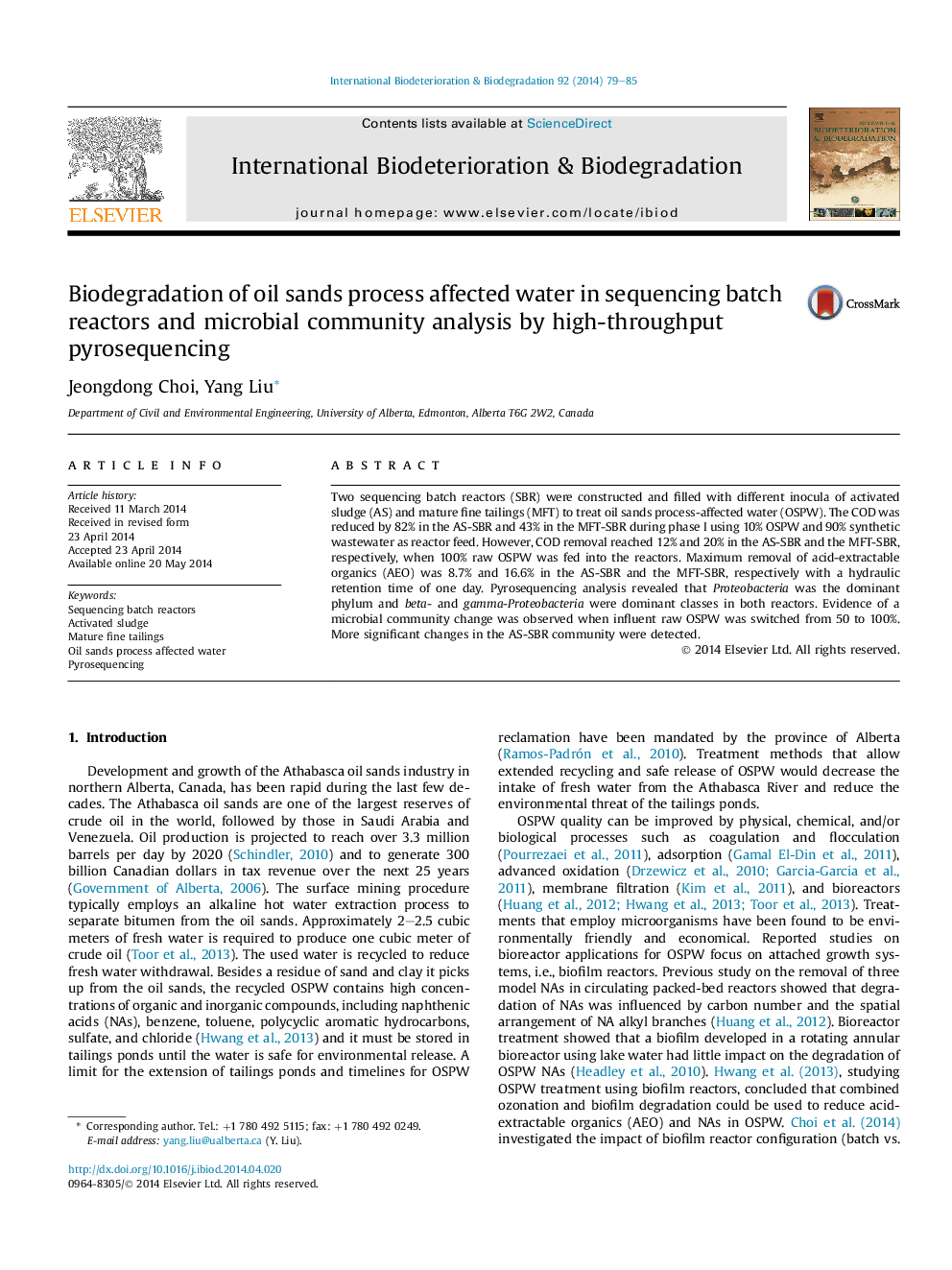| Article ID | Journal | Published Year | Pages | File Type |
|---|---|---|---|---|
| 4364774 | International Biodeterioration & Biodegradation | 2014 | 7 Pages |
Abstract
Two sequencing batch reactors (SBR) were constructed and filled with different inocula of activated sludge (AS) and mature fine tailings (MFT) to treat oil sands process-affected water (OSPW). The COD was reduced by 82% in the AS-SBR and 43% in the MFT-SBR during phase I using 10% OSPW and 90% synthetic wastewater as reactor feed. However, COD removal reached 12% and 20% in the AS-SBR and the MFT-SBR, respectively, when 100% raw OSPW was fed into the reactors. Maximum removal of acid-extractable organics (AEO) was 8.7% and 16.6% in the AS-SBR and the MFT-SBR, respectively with a hydraulic retention time of one day. Pyrosequencing analysis revealed that Proteobacteria was the dominant phylum and beta- and gamma-Proteobacteria were dominant classes in both reactors. Evidence of a microbial community change was observed when influent raw OSPW was switched from 50 to 100%. More significant changes in the AS-SBR community were detected.
Keywords
Related Topics
Life Sciences
Environmental Science
Environmental Science (General)
Authors
Jeongdong Choi, Yang Liu,
